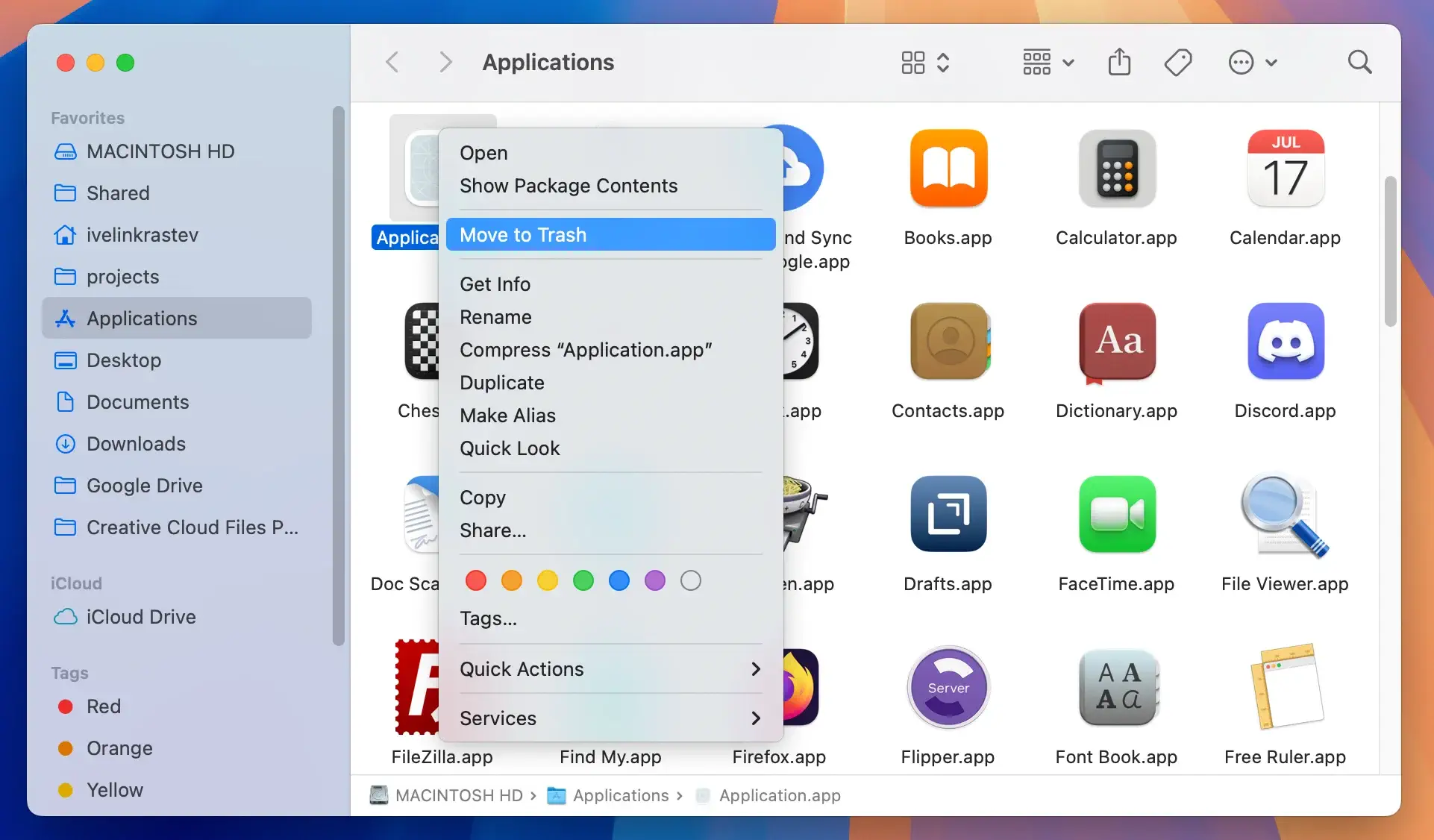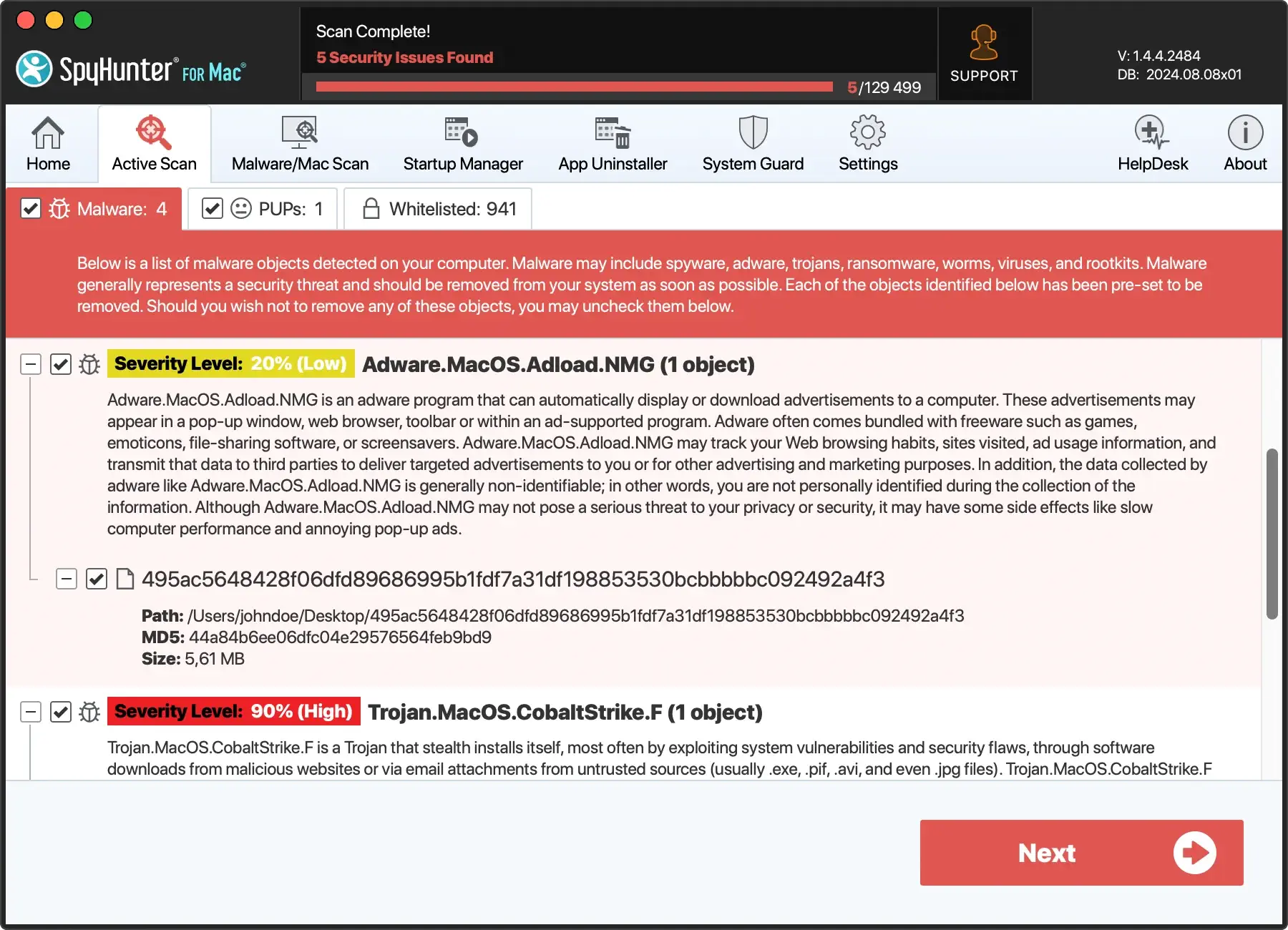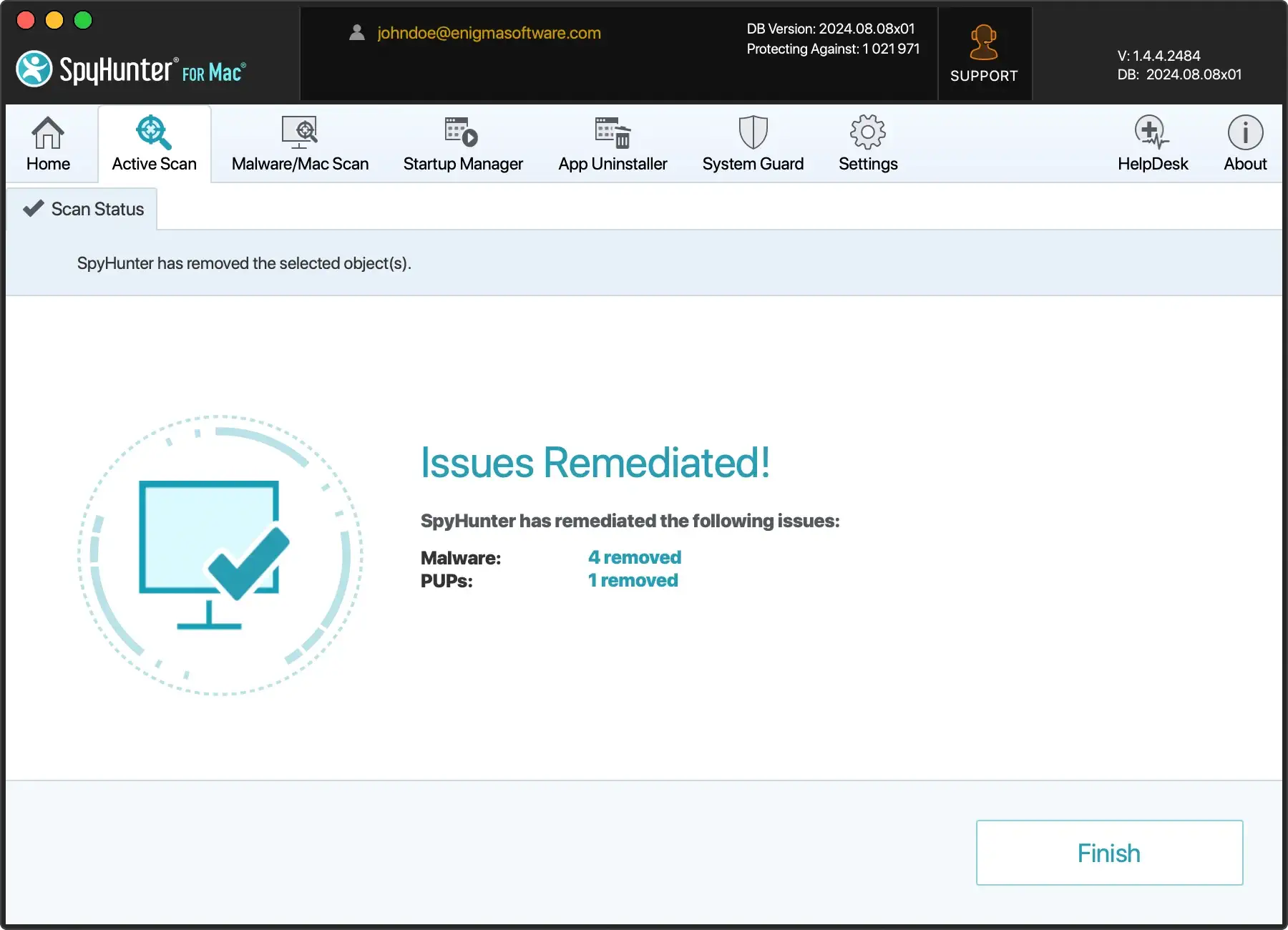Remove Smokyashan From Mac (Virus Removal Guide)
Before we dive in
Before we dive in, let's make sure you stay safe online. We created SpyHunter because your security matters to us.
Protect your computer today — download SpyHunter right here! Check out our top tips below to keep your computer safe and secure.

Have you noticed your Mac behaving oddly, with changed homepage settings or slow performance?
You might be dealing with the Smokyashan virus, a pesky malware that targets Macs, hijacking browsers and compromising personal data.
This guide takes you through what Smokyashan is, how it sneaks into your system, and both manual and automated ways to get rid of it for good.
Whether you’re facing incessant ads or want to prevent future attacks, keep reading for effective strategies to clean up and protect your Mac.
What is the Smokyashan virus and how does it affect your Mac?
The Smokyashan virus is a type of malware specifically designed to target Mac computers, primarily acting as a browser hijacker.
Once it infiltrates your system, it modifies web browser settings without permission, changing your homepage and default search engine to its own, often malicious, domains. This results in unwanted advertisements and redirects that can lead to further security issues.
Additionally, Smokyashan is capable of tracking your online activities, collecting personal data which might be used for targeted ad campaigns or phishing attacks.
What makes Smokyashan particularly troublesome is its persistence and the difficulty of removal.
It often installs additional components like malicious configuration profiles and extensions that help it reassert control even after initial removal attempts.
This behavior not only compromises your web browsing experience but also poses a significant threat to your privacy and overall cybersecurity.
Key symptoms of Smokyashan infection on Mac
When your Mac is infected with the Smokyashan virus, several unusual changes and behaviors can alert you to the infection’s presence.
Key Symptoms of Smokyashan Infection on Mac
- Unwanted Browser Modifications: Homepage and search engine changes redirecting to search.smokyashan.com on browsers like Safari, Chrome, and Firefox.
- Decreased System Performance: Slower response times due to high resource consumption.
- Increased Ads and Redirects: Frequent pop-up ads, banners, and redirects to unfamiliar websites, disrupting browsing.
- Unwanted Browser Extensions: Installation of unauthorized extensions or toolbars, compromising functionality.
- Gateway for Other Malware: Potential for additional malicious software installations, threatening system security.
How to remove Smokyashan from Mac
Removing the Smokyashan malware from your Mac can be crucial to safeguard your personal data and improve your device’s performance.
Here’s a detailed walkthrough to help you eradicate this pesky software manually.
1. Uninstall Smokyashan from your Mac applications
- Navigate to your Mac’s
Finder. - In the Finder left pane, select
Applications. - Look through the list of applications and locate
Smokyashanor any suspicious application. - If you find the Smokyashan app, right-click it and choose
Move to Trash. - Empty the trash by right-clicking the trash icon in the dock and selecting
Empty Trash, which permanently deletes the app.

2. Eliminate Smokyashan from Mac browsers
After removing the Smokyashan application from the Mac, it is also necessary to clean up any lingering modifications in your web browsers.
Each browser requires specific steps:
Remove Smokyashan from Safari
- Open Safari and from the top menu, choose
Safariand thenPreferences. - Under the
Extensionstab, look for any unknown extensions that could be related to Smokyashan and uninstall them. - To reset Safari, go to the
Historymenu and selectClear History. Chooseall historyto remove all browsing data.
Clear Smokyashan from Google Chrome
- Open Chrome and access
Settingsby clicking the three dots in the upper right corner. - Go to the
Extensionsmenu and remove any suspicious extensions tied to Smokyashan. - To reset Chrome, return to
Settings, scroll down toAdvanced, and click onRestore settings to their original defaults.
Delete Smokyashan from Mozilla Firefox
- Open Firefox, and click the menu button (three horizontal lines) then
Add-ons. - In the Extensions section, find and remove any unfamiliar extensions that could be associated with Smokyashan.
- To reset Firefox, click the menu button, choose
Help->Troubleshooting Information, and then clickRefresh Firefox.
3. Remove Smokyashan with SpyHunter
If you’re looking for a hassle-free method to remove the Smokyashan malware from your Mac, using SpyHunter, a robust cybersecurity software, might be your best bet.
This powerful tool offers a comprehensive solution for detecting and eliminating such threats efficiently. Using SpyHunter is straightforward.
Download SpyHunter from here. Once downloaded, install the software by following the on-screen instructions.
After installation, open SpyHunter and select the scan option to detect all malicious entities, including the Smokyashan malware.

Upon completion of the scan, SpyHunter will display all identified threats and allow you to easily remove them with a few clicks.
This automated approach not only saves time but also ensures that all components of the malware, including those deeply embedded into the system, are effectively removed.

Preventing future infections: Tips to safeguard your Mac
Keeping your Mac safe from threats like the Smokyashan virus requires vigilance and a proactive approach to cybersecurity. Here are essential tips to help you avoid future infections and enhance your digital security.
Firstly, always update your macOS and installed software.
Apple regularly releases security patches that fix vulnerabilities, which can prevent malware from exploiting system weaknesses.
To update, navigate to System Settings and select Software Update.

Secondly, utilize strong, unique passwords for all accounts and enable two-factor authentication where possible. This adds an extra layer of security against unauthorized access.
Additionally, consider using comprehensive security software like SpyHunter for Mac to provide regular scanning and real-time protection against threats.
It updates its malware definitions frequently, helping to safeguard your system against the latest malware and potentially unwanted programs (PUPs).